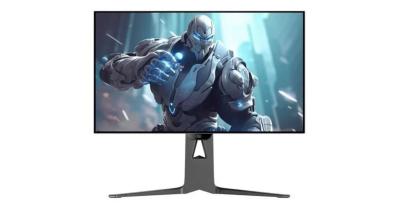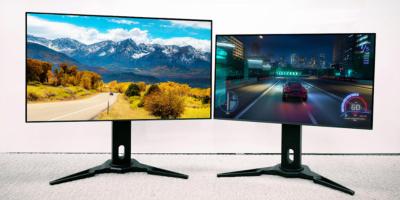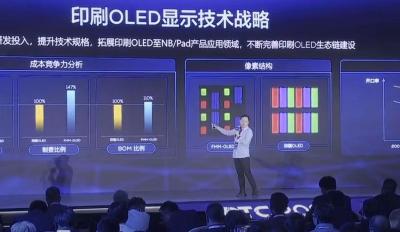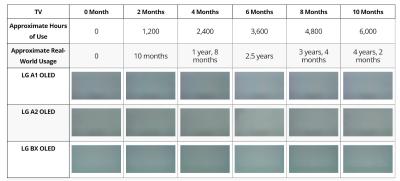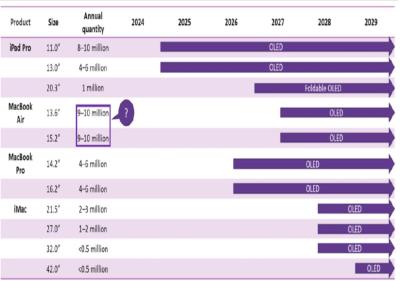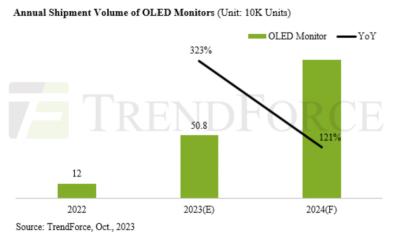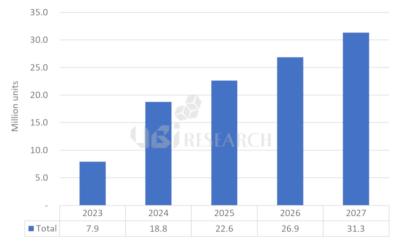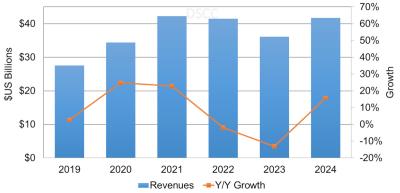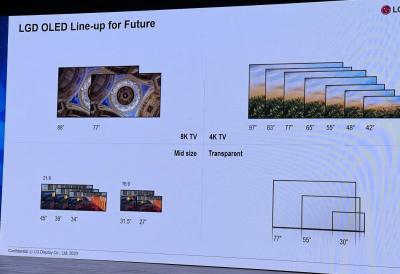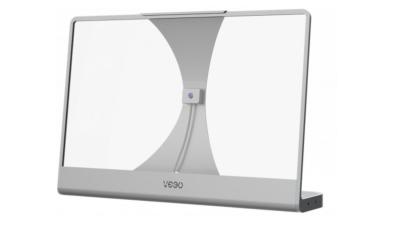OLED (Organic Light Emitting Diode) technology offers bright, efficient and fast displays, outperforming LCD display. OLEDs deliver the best picture quality ever and are used in many devices, from smartwatches through smartphones and tablets to TVs and more.
OLEDs are also used to enable high-end monitors that offer excellent contrast, image quality, colors and new form factors. This article will explain the benefits, the current status and the future of OLED monitors.
OLED monitors vs LCD monitors
- OLED provide a better image quality with a much higher contrast (true blacks), wide color gamut, better viewing angles and a much faster refresh rate (great for gaming!)
- OLED panels are much thinner and lighter compared to LCD panels
- OLED monitors consume less power - as only lit pixels draw energy on OLED displays
- An OLED monitor can be flexible, bendable, rollable - and transparent
OLED monitors and the burn-in challenge?
Of course OLED technology is not perfect. One of the major drawbacks of an OLED display is image retention / burn-in. In an OLED display each pixel is driven independently and each pixel ages differently - and as brightness is reduced with use (the lifetime of OLED materials is limited), we have burn-in problems.
For mobile phones and TVs this is less of a problem - but in a computer user interface many UI elements are quite fixed (toolbars, icons, etc) which means that burn-in is a real problem. There are some technologies to handle this problem - for example by measurement and compensation, or by adopting a tandem architecture to increase the lifetime. In addition user-interface designers can design a user interface that will be more suited for OLED displays.
OLED monitors on the market
OLED technology is very popular in smartphones, wearables and TVs - and in recent years OLED monitors has entered the market as display makers now target this market, starting with high-end models aimed towards gaming and content creation.
Display makers LG Display, Samsung Display and others target premium applications and mostly produce OLED panels in the range of 27-inch to 42-inch. One example of an OLED monitor is the ViewSonic VX2776-2K-OLED, based on a 26.5" 1000 nits (HDR) 2560x1440 240Hz 0.03 ms G2G VRR WOLED display (made by LGD).
Asus has several OLED monitors. The PG32UCDM and PG34WCDM are two gaming monitors, each based on a different OLED panel technology. The PG32UCDM uses a 32" 4K (3840x2160, 16:9) 240Hz VRR 1000 nits (HDR peak) QD-OLED panel, produced by Samsung Display. The PG34WCDM monitor, on the other hand is based on a 34" 3440x1440 (21:9) 240Hz VRR 1300 nits (HDR peak) MLA (microlens) WOLED curved (800R) panel, produced by LG Display.
Samsung has its own high-end OLED monitor, the Odyssey OLED G95SC. This is an ultra-wide gaming monitor based on a 49-inch 5120x1440 resolution, 240Hz, 1800R curved QD-OLED panel. The G95SC is now shipping, for around $2,000. LG also offers OLED monitors, including the UltraGear 27GR95QE-B a gaming monitor with a 27" 2560x1440 240Hz 0.3ms (GtG) response time OLED display. The 27" UltraGear OLED monitor is now shipping for around $850.
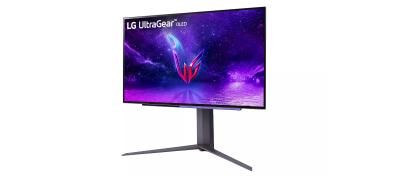
Click here for our comprehensive list of OLED monitors.
Further reading
SDC upgrades its QD-OLED line, starts producing 31.5" 4K panels
Samsung Display announced that it is beginning to produce a new 31.5" 4K QD-OLED. This is SDC's highest density QD-OLED display, at 140 PPI. The company recently upgraded its QD inkjet printing deposition system to support this higher resolution. It will also enable SDC to produce 8K 65" QD-OLED displays (that will also be 140 PPI).
Samsung Display also announced that next year it will start producing 27" QHD QD-OLED monitor panels that will support a 360Hz refresh rate, targeting the gaming monitor market.
TCL CSoT reiterates plans to start producing inkjet printing OLEDs in 2024, to target IT displays
TCL CSoT says that it will start producing OLED displays using an inkjet printing process in the second half of 2024. This is excellent news and good to know CSoT is still on track for initial production in 2024. The company says it will first target the IT and medical sector.
The company says that the cost of producing OLEDs using its inkjet printed panels will be lower compared to the currently-used FMM based method, and its OLEDs will offer superior performance (in lifetime, mostly) as its process enables higher aperture.
Rtings.com posts the results of its 10-month OLED and LCD display longevity tests
RTINGS.com posted an interesting article, detailing the results of their long-term (10-months) longevity tests on several OLED and LCD TVs and monitors. The test is simple - display a CNN feed constantly, and checking what happens. Note that CNN changed their logo a bit a few months into the test, but the team did not make any changes to the test itself.
As is expected, OLED monitors and TVs suffer from image retention problems, and the CNN logo is visible in some of these panels, when showing a gray screen. Some TVs suffer more than others.
Apple's IT OLED roadmap supposedly leaks, detailing when the company plans to launch its OLED laptops, monitors and tablets
Accoridng to Twitter (X) user Revegnus, the following is a leaked Apple roadmap, detailing the company's plans for OLED laptops, tablets and monitors:
As many already estimate, Apple will release the first OLED tablets next year, the iPad Pro 11" and 13". The next stage will only arrive in 2026, when Apple will ship a foldable 20.3" tablet, and two OLED laptops (MacBook Pro 14.2" and 16.2").
TrendForce: over a million OLED monitors to ship in 2024
TrendForce says that 508,000 OLED monitors will ship in 2023, up 323% from 2022. The market will continue to grow at a fast pace, to over a million shipments in 2024.
In 2024, TrendForce sees LG and Samsung both launching new OLED panels for the monitor market, which will help to expand the market. TrendForce further says that at the end of 2023, Samsung Electronics and LGE both hold a market share of almost 30%, Dell holds a market share of around 20% and Asus of nearly 10%.
UBI: The OLED IT panel market will grow at a CAGR of 41% to reach 31 million units by 2027
UBI Research estimates that 7.9 million AMOLED displays for IT applications (tablets, notebooks and monitors) will ship in 2023, growing to 31 million by 2027 (a CAGR of 41%). Apple's adoption of OLED screens starting in 2024 will fuel much of the demand.
OLED makers, led by Samsung, LG, BOE and Visionox are all expected to start producing IT OLED panels in existing 6-Gen production lines, and companies are also planning to construct new dedicated 8.5-Gen lines for IT applications.
DSCC: the OLED market will decline 13% in 2023, growth to resume in 2024
DSCC estimates that OLED revenues in 2023 will be $36.1 billion - down 13% from last year. Just a few months ago DSCC's forecast for 2023 was $38.9 billion. This is the second year that the OLED market is contracting. In terms of shipments, there will be a 5% decrease in 2023. Looking forward to 2024, DSCC sees the market starting to recover, as demand for IT displays, TVs and smartphones will increase.
Looking at specific markets in 2023, DSCC says that OLED smartphone shipments will remain flat, but will drop 11% in revenues - as the demand for higher-end flexible displays is lower than in 2022. The only positive is the foldable display market, where shipments will increase 33% in 2023 compared to last year. 2023 also experiences a big drop in demand for OLED TVs - DSCC sees shipments declining 31% in 2023. The same goes for laptop OLEDs - a 32% decrease in sales in 2023.
LG to soon start producing 32", 34" and 39" WOLED panels
LG Display showed its WOLED roadmap during the K-Display conference in Seoul, saying that it will soon start producing 32-inch (16:9), 34-inch (21:9) and 39-inch (21:9) models. These panels are aimed for computer monitor applications, rather than TVs, although the 32-inch could also be used as a TV panel.
LGD did not detail when it expects to start producing these panels. Dough already unveiled a few weeks ago that it is working on a 32" monitor, and this will be base on an LGD WOLED panel
LG Display demonstrated its 30" and 77" transparent OLED displays for the first time
LG Display is demonstrating its new 30" and 77" transparent OLED displays for the first time, at the company's booth at K-Display 2023, in Seoul, Korea.
Credit: LG Display
The new 30" transparent OLED offers HD resolution, while the 77" panel offers 4K resolution. All of LG's latest transparent OLED displays offer 45% transparency. LG showed its entire range of T-OLED displays in a coffee shop setting, in partnership with Starbucks.
Veeo launches transparent 30" and 55" OLED monitors with a behind-the-screen camera
US-based Veeo announce a new display called the T30, that is based on a transparent OLED panel with a behind-the-display camera. The T30 is a monitor that enables video communication with an aligned user line of sight.
The T30 is offered in two models, 30" and 50", both based on LG's transparent WOLED panels. Veeo will announce the price of its transparent OLED monitor towards the end of 2023.
Pagination
- Previous page
- Page 2
- Next page
